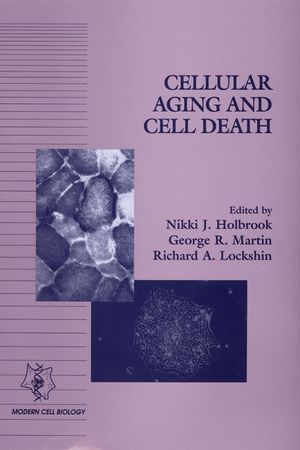Cellular Aging and Cell DeathISBN: 978-0-471-12123-7
Paperback
336 pages
December 1995
 This is a Print-on-Demand title. It will be printed specifically to fill your order. Please allow an additional 10-15 days delivery time. The book is not returnable.
|
||||||
Cellular AGING AND CELL DEATH
Edited by Nikki J. Holbrook, George R. Martin, and Richard A.Lockshin
Cellular Aging and Cell Death provides a thorough understanding ofthe mechanisms responsible for cellular aging, covering the recentresearch on programmed cell death and senescence, and describingtheir role in the control of cell proliferation and the agingprocess. This one-of-a-kind book is the first to combine the twohottest research areas of cell biology into one comprehensivetext.
Leading experts contribute to give readers an authoritativeoverview of the distinct fields of cellular aging and programmedcell death, as well as to demonstrate how both fields are criticalto understanding the aging process. They address the large andgrowing interest in apoptosis, especially with regard to themolecular signals that induce and regulate programmed cell death,and the role of apoptosis in a variety of age-associated diseasesand disabilities. Throughout the book, a strong emphasis is placedon the interrelationship of the molecular, cellular, andphysiological aspects of senescence.
Individual chapters discuss such topics as the role and regulationof apoptosis in development, the potential impact of cell death onsuch postmitotic tissues as nerve and muscle, and suggest thatprogrammed cell death plays an important role in both pathologicaland nonpathological aspects of aging, including neurodegenerativediseases.
One important chapter focuses on the most recent research involvingthe study of telomeres, whose reduction in length with age and celldivision may underlie cellular senescence. The subject of neuronalcell death is also put into the perspective of aging.
Cellular Aging and Cell Death bridges the rapidly growing fields ofcellular aging and programmed cell death. This thorough, yetconcise book will be of particular interest to graduate studentsand researchers within the fields of cell and developmentalbiology, neurobiology, immunology, and physiology. Physicians andmedical students involved in the fields of gerontology andpathology will also find this an informative reference.
Edited by Nikki J. Holbrook, George R. Martin, and Richard A.Lockshin
Cellular Aging and Cell Death provides a thorough understanding ofthe mechanisms responsible for cellular aging, covering the recentresearch on programmed cell death and senescence, and describingtheir role in the control of cell proliferation and the agingprocess. This one-of-a-kind book is the first to combine the twohottest research areas of cell biology into one comprehensivetext.
Leading experts contribute to give readers an authoritativeoverview of the distinct fields of cellular aging and programmedcell death, as well as to demonstrate how both fields are criticalto understanding the aging process. They address the large andgrowing interest in apoptosis, especially with regard to themolecular signals that induce and regulate programmed cell death,and the role of apoptosis in a variety of age-associated diseasesand disabilities. Throughout the book, a strong emphasis is placedon the interrelationship of the molecular, cellular, andphysiological aspects of senescence.
Individual chapters discuss such topics as the role and regulationof apoptosis in development, the potential impact of cell death onsuch postmitotic tissues as nerve and muscle, and suggest thatprogrammed cell death plays an important role in both pathologicaland nonpathological aspects of aging, including neurodegenerativediseases.
One important chapter focuses on the most recent research involvingthe study of telomeres, whose reduction in length with age and celldivision may underlie cellular senescence. The subject of neuronalcell death is also put into the perspective of aging.
Cellular Aging and Cell Death bridges the rapidly growing fields ofcellular aging and programmed cell death. This thorough, yetconcise book will be of particular interest to graduate studentsand researchers within the fields of cell and developmentalbiology, neurobiology, immunology, and physiology. Physicians andmedical students involved in the fields of gerontology andpathology will also find this an informative reference.



